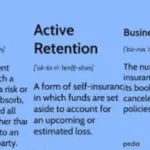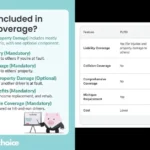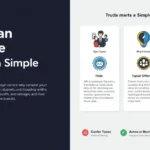Introduction to Muchas Gracias:
The phrase “Muchas gracias” carries more weight than a simple “thank you”—it’s a cultural expression of genuine appreciation in the Spanish-speaking world. Whether you’re traveling, conducting business, or building relationships, understanding when and how to use “Muchas gracias” properly can make all the difference. This guide explores the depth behind this common phrase, its variations, and how to use it like a native speaker.
The Meaning Behind Muchas Gracias:
Literal vs. Cultural Meaning:
-
Literal translation: “Many thanks”
-
Cultural meaning: Expresses warm, heartfelt gratitude
-
More emphatic than a simple “gracias”
When to Use Muchas Gracias:
-
When someone goes out of their way to help you
-
After receiving a gift or special favor
-
In formal business settings
-
To show deep appreciation for hospitality
Variations of Thank You in Spanish:
| Expression | Formality | When to Use | Response |
|---|---|---|---|
| Muchas gracias | Neutral | Most common for sincere thanks | De nada |
| Muchísimas gracias | Informal | Extreme gratitude | No hay de qué |
| Mil gracias | Casual | Among friends/family | A ti |
| Gracias de antemano | Formal | Before receiving help | Con gusto |
| Te agradezco mucho | Personal | One-on-one situations | Fue un placer |
Pronunciation Guide for Muchas Gracias’s:
Master the authentic pronunciation:
-
“Moo-chas” (soft “ch” like in “church”)
-
“Grah-see-as” (rolled “r”, soft “c”)
-
Stress on first syllable of “gracias”
-
Smooth connection between words
Common mistakes to avoid:
-
Pronouncing it as “moo-chass gray-see-us”
-
Skipping the rolled “r”
-
Over-emphasizing each word separately
Cultural Context of Muchas Gracias’s:
In Business Settings:
-
Accompany with handshake or slight nod
-
Use formal version with superiors
-
Follow up with email reinforcement
In Social Situations:
-
Often paired with physical contact (hug, pat on back)
-
More effusive expressions among friends
-
Expected after meals or gifts
Regional Differences:
-
Mexico: Often add “wey” casually (“Muchas gracias, wey”)
-
Spain: Sometimes “Muchísimas gracias” more common
-
Argentina: May hear “Gracias che” informally
Body Language That Enhances Muchas Gracias’s;
Make your gratitude more authentic with:
-
Eye contact: Shows sincerity
-
Hand gestures: Palms up enhances meaning
-
Facial expression: Warm smile matches words
-
Physical contact: Appropriate hugs or handshakes
-
Small bow: In formal situations
When Not to Use Muchas Gracias’s:
Some situations call for different expressions:
-
Sarcastic contexts (use “gracias” dryly)
-
Minimal favors (simple “gracias” suffices)
-
When you’ll reciprocate immediately (use “ahora te toca a ti”)
Responding to Muchas Gracias:
Common polite responses:
-
De nada (You’re welcome – most common)
-
No hay de qué (Don’t mention it)
-
Con mucho gusto (With pleasure)
-
A ti/usted (To you – formal/informal)
-
Fue un placer (It was a pleasure)
Writing Muchas Gracias Properly:
Formal written communication rules:
-
Always spell out completely
-
Use in opening/closing emails
-
Can emphasize with exclamation (“¡Muchas gracias!”)
-
In letters, often appears in final paragraph
Informal writing (texts, chats):
-
Often abbreviated (“mchas grax”)
-
May include emojis (🙏, ❤️)
-
Frequently in all caps for emphasis
Teaching Children to Say Muchas Gracias’s:
Effective methods:
-
Model the behavior frequently
-
Make it a game (“Who can say gracias the most?”)
-
Use positive reinforcement
-
Explain cultural importance
-
Practice through role-playing
Common Mistakes Non-Natives Make:
-
Overusing it (sounds insincere)
-
Underusing it (appears rude)
-
Poor pronunciation (changes meaning)
-
Wrong formality level (inappropriate context)
-
Missing body language (seems cold)
Muchas Gracias in Popular Culture:
The phrase appears in:
-
Song lyrics (reggaeton, pop, rancheras)
-
Movie dialogue (especially dramas)
-
Telenovela emotional scenes
-
Political speeches
-
Advertising slogans
Conclusion:
“Muchas gracias’s” represents more than politeness—it’s a bridge between cultures, a tool for building relationships, and an expression of genuine human connection. When used properly with the right pronunciation, context, and body language, “Muchas gracias” can open doors and warm hearts throughout the Spanish-speaking world. Mastering this phrase will enrich your travels, business dealings, and personal relationships.
FAQs:
1. Is “muchas gracias” formal or informal?
It’s neutral – works in both contexts depending on tone.
2. How is it different from “gracias”?
“Muchas gracias” shows deeper appreciation than just “gracias.”
3. Can I use it in business emails?
Yes, it’s perfectly appropriate for professional communication.
4. What’s the strongest way to say thank you?
“Muchísimas gracias” or “Eternamente agradecido/a.”
5. Do all Spanish speakers use this phrase?
Most do, though some regions have local variations.
6. How do I respond when someone says it?
“De nada” is the most common and universally understood response.











